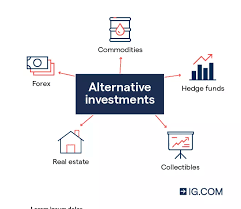The Retirement Benefits Authority released the Industry Report, highlighting that the total Assets Under Management (AUM) increased by 12.2% to KES 2.5 tn in June 2025, up from KES 2.3 tn in December 2025. The KES 2.5 tn also represented a 27.9% improvement compared to the KES 2.0 tn recorded in June 2024. This performance is attributable to positive investment returns and increased contributions, following the increase in the National Social Security Fund (NSSF) contribution limits since February 2025. Additionally, the stable economic environment resulting from a stable exchange rate, easing interest rates and mild inflationary pressures further supported the performance.
In H1’2025, traditional assets remained dominant due to their stable and predictable returns. Investment in government securities accounted for the largest share of asset allocation, representing 52.3% of the industry AUM. The AUM for government securities rose by 12.3% to KES 1.3 tn in June 2025, up from KES 1.2 tn in December 2024. Returns from government securities were positive, driven by improved bond valuations following the easing of Central Bank rates.
Quoted Equities investments increased significantly by 26.1% to KES 255.2 bn in June 2025 from KES 202.3 bn in December 2024. Additionally, quoted equities held 10.1% of the portfolio during the period. This was majorly attributable to the rebound in the equities markets with the Nairobi All Share Index (NASI) gaining by 24.3% to 153.4 in June 2025 from 123.5 in December 2024. Since pension funds invest in quoted equities, the positive returns were driven by significant gains by stocks in NASI such as Safaricom, NCBA and Cooperative Bank in the first half of 2025.
NSSF’s Assets Under Management increased by 17.2% to KES 558.1 bn from KES 476.0 bn in December 2024. NSSF’S assets allocation in government securities and quoted equities came in at 63.7% and 15.3% respectively. This resulted from an increase in contributions to NSSF, following the implementation of the third phase of the NSSF Act of 2013, where the lower and upper limits contributions increased to KES 8,000.0 and KES 72,000.0 from KES 7,000.0 and KES 36,000,0 respectively.
Looking ahead, the pensions industry is expected to sustain its growth trajectory, supported by continued reforms in contribution structures, a resilient macroeconomic environment, and expanding investment opportunities across both traditional and alternative asset classes. The easing of interest rates and stable inflationary trends are likely to enhance bond valuations further, while gradual diversification into equities and alternative investments will provide additional avenues for return optimization. Overall, the sector remains well‑positioned to deliver steady value growth and safeguard retirement savings in the medium term
















